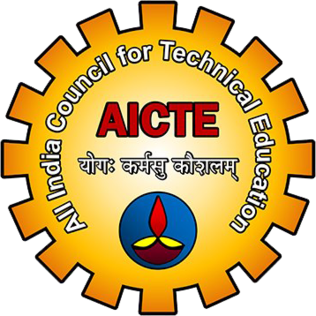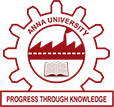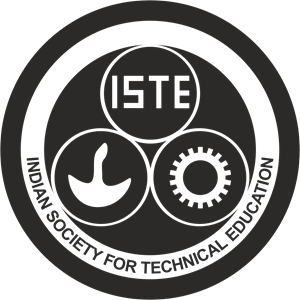COMPUTING FACILITIES
The ECE department has the following computing facilities for their academic and research activities:
Highlights of Computing Facilities and Support
- ECE department computer lab is well-equipped with latest Desktops, LAN & Internet Facility.
- ECE department lab has Software License for teaching-learning like Xilinx Vivado 2018.2, MATLAB campus license, Keil Software, Arduino and more open-source software.
- ECE department lab is well equipped with computing hardware of the latest configuration, including the following models:
- Arduino Development Board
- 8051 Microcontroller Trainer kit
- ARM Kit LPC2148
- Raspberry Pi 3 Model B+
- Xilinx Vivado-Nexys 4 Artix 7 XC7A100T-CSG324
- Basys 3 [410-183P- KIT]
- Math Works Campus Wide License Agreement Standard Campus + Student Licenses + MAOTS (ML Online Training Suite)
- Microsoft enabled Virtual Classrooms using Microsoft Teams
- In-house Learning Management System for self-paced 24 x 7 learning and teaching using Amrita MOODLE
SOFTWARE FACILITY
The ECE department has the following software facilities for their academic and research activities:
The Vivado Design Suite system tools enable you to design a complete embedded processor system for implementation in a Xilinx FPGA device. The Vivado Design Suite is a Xilinx development system product that is required to implement designs into Xilinx programmable logic devices.
Vivado includes:
- The Vivado IP integrator tool, with which you can develop your embedded processor hardware.
- The Software Development Kit (SDK), based on the Eclipse open-source framework, which you can use to develop your embedded software application. SDK is also available as a standalone program.
- Embedded processing Intellectual Property (IP) cores, including processors and peripherals.
MATLAB® and Simulink® to generate code and run it on hardware. However, coding is just one task – learn how you can use MATLAB and Simulink to design, code, and verify your next embedded system from prototyping to production
Keil® MDK is the most comprehensive software development solution for Arm®-based microcontrollers and includes all components that you need to create, build, and debug embedded applications.
The Arduino board started changing to adapt to new needs and challenges, differentiating its offer from simple 8-bit boards to products for IoT applications, wearable, 3D printing, and embedded environments. All Arduino boards are completely open-source, empowering users to build them independently and eventually adapt them to their particular needs.
HARDWARE FACILITY
The ECE department has the following computing hardware for their academic and research activities
- Arduino Development Board
- 8051 Microcontroller Trainer kit
- ARM Kit LPC2148
- Raspberry Pi 3 Model B+
- Xilinx Vivado-Nexys 4 Artix 7 XC7A100T-CSG324
Arduino Uno is a microcontroller development board based on the Atmel ATmega328 MCU. The Arduino Uno has 14 digital input/output pins (of which 6 can be used as PWM outputs), 6 analog inputs, a 16 MHz crystal oscillator, a USB connection, a power jack, an ICSP header, and a reset button. This Arduino MCU board contains everything needed to support the microcontroller. Simply connect it to a computer with a USB cable or power it with a AC-to-DC adapter or battery to get started. The Arduino Uno differs from all preceding boards in that it does not use the FTDI USB-to-serial driver chip. Instead, it features the Atmega8U2 programmed as a USB-to-serial converter. The Arduino Uno MCU board can be powered via the USB connection or with an external power supply. The power source is selected automatically.
Microcontroller Trainer Kit based on 8 bit 8051 Microcontroller, which is widely used to train engineers to develop on software/hardware for any industrial process & control. Kit has power-full Monitor EPROM, RAM, I/O Lines, Timer/Counter, Serial, Seven Segment Display, and Keyboard for Man to Machine Interface
The LPC2148 microcontroller is designed by Philips (NXP Semiconductor) with several in-built features & peripherals. Due to these reasons, it will make more reliable as well as the efficient option for an application developer. LPC2148 is a 16-bit or 32-bit microcontroller based on ARM7 family.
On Pi Day 2018, the Raspberry Pi 3 Model B+ was launched with a faster 1.4 GHz processor, a three-times faster gigabit Ethernet (throughput limited to ca. 300 Mbit/s by the internal USB 2.0 connection), and 2.4 / 5 GHz dual-band 802.11ac Wi-Fi (100 Mbit/s). Other features are Power over Ethernet (PoE) (with the add-on PoE HAT), USB boot and network boot (an SD card is no longer required).
The Digilent Nexys™4 DDR board, based on Artix FPGA, brings unprecedented performance to a student-focused FPGA design kit. With its large, high-capacity FPGA, generous external memories, and a collection of USB, Ethernet, and other ports, the Nexys4 can host designs ranging from introductory combinational circuits to powerful embedded processors.
COMPUTING FACILITIES
The EEE department has the following computational resources for academic and research purposes.
Highlights of Computing Facilities and Support
- The EEE department's computer lab is well-equipped with the most up-to-date desktops, LAN, and Internet access.
- The EEE department's computer lab offers 30 computers for conducting simulation studies in a range of subjects, including control systems, power electronics, signals and systems, and power systems, utilising software such as MATLAB 2021a, AutoCAD 2022, ETAP, PSCAD, Arduino and more open-source software.
- Microsoft Campus Agreement for operating Systems and Applications under Microsoft Campus Agreement
- Math Works Campus Wide License Agreement Standard Campus + Student Licenses + MAOTS (ML Online Training Suite)
- Moodle learning management software engage students and faculty members in active 24 x 7 learning outside of the classroom.
SOFTWARE FACILITY
For academic and research purposes, the EEE department has the following software resources.
Use MATLAB® and Simulink® to generate code and operate it on hardware. Learn how to utilise MATLAB and Simulink to design, code, and evaluate your next embedded system from prototype to production using MATLAB and Simulink.
For drafting and designing, the AutoCAD programme is employed. It allows manufacturing sector users to conceptualise ideas, product designs, and drawings to the necessary level of technical accuracy, as well as perform rapid design calculations and simulations.
The Arduino board began to evolve in response to new needs and problems, moving away from simple 8-bit boards and toward solutions for IoT, wearables, 3D printing, and embedded settings. All Arduino boards are open-source, allowing users to create them on their own and customise them to meet their own needs.
PSCAD is a comprehensive design, simulation, and modelling tool for power systems. A broad library of system models, spanning from simple passive parts and control functions to electric machines and other complex systems, is available.
ETAP is a software that can be used to simulate, develop, monitor, control, train operators, optimise, and automate power systems. The most comprehensive set of operating solutions is provided by ETAP's complete digital twin platform.
HARDWARE FACILITY
For academic and research purposes, the EEE department has the following hardware.
Solar wind hybrid systems use a combination of renewable energy sources, such as wind and solar, to generate electricity. Solar panels and small wind turbine generators are used to generate electricity in this setup. Solar energy is only available throughout the day, whereas wind energy is available at all times of the day, depending on the weather. Because wind and sun energy complement each other, the system can create electricity virtually all year round.
In an on-grid solar system, where solar panels are mounted and connected in series to convert solar energy into electrical energy, a grid-tie solar inverter is frequently utilised. The system's electricity is sent into the grid and used to power a variety of devices.
Wind power generating entails converting wind energy into rotational energy of the blades and then transferring that rotating energy into electrical energy by a generator. Wind turbines can operate independently, be connected to a utility power grid, or even be integrated with a photovoltaic (solar cell) system.
RESEARCH FACILITIES
Technology is evolving at a rapid speed and computer science is at the core of it. First, the scope of technology has no geographical boundary and isn't restricted to India. Computer Science is one among the foremost wanted courses by Indian students, due to the software package and IT boom of the past 20 years. Apart from putting India on the global map, technology has just about modified the full landscape of however individuals live. Right from social media to the genetics revolution, technology has taken a central role in several of the best technological innovations and developments of the twenty first century. Since this field is massively in style among Indian students, On the other hand, technology is set to grow in an incomparable manner within the coming few years, thereby creating a lot of opportunities for research.
The Department, which is equipped with a modern computer centre, provides the best and most up-to-date practical training. It is fully equipped with a variety of software that caters to the researcher’s demands while also meeting the curriculum provided by Anna University.
The laboratories include
- Internet Programming Lab
- Graphics and multimedia lab
- Cloud computing lab
- Programming and data structures Lab
- Mobile Application Development Lab
- Database Management Systems Lab
- Case tools Lab
- Data Analytics Lab
- ACES Lab
A web application could be a consumer-server application that uses customary Internet protocols for connecting the client to the server. We can use correctly the same methods to generate a exact Internet application, which is available publicly through the World Wide Web, or to generate an intranet application. Internet programming means that making websites and therefore the background work of it.Html, CSS, JavaScript languages used for it. It's mostly about web development and designing.
Multimedia is content that uses a mix of various content forms like text, audio, images, animations, video and interactive content. This laboratory introduces special effects, as well as formation and vector graphics, and internet multimedia system audio and video content. Multimedia system is content that uses a mix of various content forms like text, audio, images, animations, video and interactive content. This laboratory also introduces special effects, as well as raster and vector graphics, and web multimedia audio and video content. Multimedia graphic designers work on each print and motion graphics that mix the use of art and technology. The sector of graphic style usually focuses on exploitation text and pictures to make illustrations for print and web site productions.
Cloud computing could be a kind of computing within which dynamically scalable and sometimes virtualized resources are provided as a service over the web. Cloud computing services typically offer common business applications on-line that are accessed from an internet browser, whereas the software package and information are hold on the servers. It is expected that Cloud Computing can facilitate in pooling of computing resources of government Departments into massive clouds thereby increasing utilization of computing resources effectively. Besides, the self-service nature of cloud computing permits organizations to make elastic environments that expand and contract; supported the work and target performance parameters. The cloud is futuristic, and a reality currently and has become the foremost exciting development and delivery various to arise within the new millennium. Presently, cloud computing continues to be within the early adoptive parent part, however can still go in thought adoption. Cloud, with its economic, inexperienced and ascendible development and delivery mechanism, are a present to organizations and also the business advantages are simple. Although it may be seen as a threat to hardware makers, yet cloud offers tremendous chance in terms of package, services, networking, platforms, and infra-structure sharing “on-demand”. The event of the project is carried out using open source software toolkit like Eucalyptus, Hadoop, with CDAC open source OS BOSS.
Data Structure is a way to store and organize data so that it can be used efficiently. Data Structures is about rendering data elements in terms of some relationship, for better organization and storage A good algorithm usually comes together with a set of good data structures that allow the algorithm to manipulate the data efficiently. In this Programming and Data Structures Laboratory, we consider the common data structures that are used in various computational problems. You will find out how these data structures area unit enforced in numerous programming languages and can observe implementing them in our programming assignments. This will assist you to know what's happening within a selected inbuilt implementation of a knowledge structure and what to expect from it. You will conjointly learn typical use cases for these data structures. The main aim of this laboratory is to learn programming is to learn programming languages and implementing data structures
Mobile application development is the set of processes and procedures concerned in writing software system for, wireless computing devices like smartphones or tablets. The main aim of Mobile Application Development Lab is to Know the components and structure of mobile application development frameworks for Android and windows OS primarily based mobiles, to understand the thanks to work with varied mobile application development frameworks , to learn the basic and necessary vogue concepts and issues with development of mobile applications. and to understand the capabilities and limitations of mobile devices.
Database Management system is a collection of interrelated data and set of programs to store and retrieve the data in an efficient manner. Database Management system has evolved from a specialized computer application to a central component of modern computing environment and knowledge about database has become an integral part of computer science . The main aim of this laboratory is to have a good understanding of the fundamental DBMS used in the computer science and to design new databases. Keep abreast of current developments to continue their own skilled development. To engage themselves in lifelong learning of Database management systems theories and technologies this enables them to purse higher studies. • To interact professionally with colleagues or clients located abroad and the ability to overcome challenges that arises from geographic distance, cultural differences, and multiple languages in the context of computing. • Develop team spirit, effective work habits, and professional attitude in written and oral forms, towards the development of database application. Database Management system lab aims at practicing and achieving the objectives by using various software’s such as ORACLE, MYSQL etc.
CASE tools also known as Computer-aided software engineering tools is a component-based development which allows its users to rapidly develop information systems. The main goal of case tools laboratory is the automation of the entire information systems development life cycle process using a set of integrated software tools, such as modeling, methodology and automatic code generation. OOAD is an integral stage of software development life cycle. Students practice on various methods of Diagrams in this lab through Designing tools like Rational Rose. The objective of the Case tools lab is to gain the Modeling skills on how to use Designing tools to support software projects. Component based manufacturing has many advantages over custom development. The main advantages of component based manufacturing are the availability of high quality, defect free products at low cost and at a faster time. The prefabricated components are customized as per the requirements of the customers. The components used are pre-built, ready-tested and add value by rapid customization to the targeted customers. However the end products obtained from case tools are only a skeleton of the final product required and a lot of programming must be done by hand to get a fully finished, good product.
Artificial Intelligence (AI) and internet of Things (IoT) are driving data complexity, new forms and sources of data.Big data analytics is that the use of advanced analytic techniques against terribly giant, numerous data sets that embrace structured, semi-structured and unstructured data, from totally different sources, and in numerous sizes from terabytes to zetta bytes. Big data could be a term applied to data sets whose size or kind is on the far side the power of ancient relative databases to capture, manage, and method the information with low-latency. And it's one or a lot of the subsequent characteristics – high volume, high rate, or high selection. Big data comes from sensors, devices, video/audio, networks, log files, transactional applications, web, and social media - much of it generated in real time and in a very large scale .Analyzing huge data permits analysts, researchers, and business users to form higher and quicker choices exploitation knowledge that was previously inaccessible or unusable. Using advanced analytics techniques like text analytics, machine learning, predictive analytics, data processing, statistics, and natural language process, businesses will analyze previously untapped data sources freelance or along with their existing enterprise knowledge to achieve new insights leading to higher and quicker choice. The main aim of data analytics lab is to process big data using Hadoop framework and to perform data analysis with machine learning algorithms.
This laboratory is equipped with 60 DELL machines with i3 processors to support the first year computer laboratories using Python. The key focus is to provide hands-on experience to the beginners and make them develop various applications using Python. ACES lab supports online courses like NPTEL, SWAYAM . Also ACES supports Moodle (an Effective Learning Management system) and AUMS (Amrita University Management System).
All the nodes inside the campus are provided with internet facilities and Wi-Fi connectivity is provided for the academic and Research activities.
RESEARCH FACILITIES
In order to provide the research facilities, our Department of Mechanical Engineering has developed different research-oriented laboratories. Student course and scholars can do research work in any one of the following laboratories as mentioned below:
- Heating Ventilation and Air Conditioning (HVAC) Laboratory
- Manufacturing Technology Laboratory
- Strength of Materials Laboratory
- Centre for Automation and Robotics
- CAD/CAM Laboratory
Heating, ventilation, and air conditioning is the use of various technologies to control the temperature, humidity, and purity of the air in an enclosed space. Its aim is to provide thermal comfort and acceptable indoor air quality.
The primary purpose of the laboratory is to show students the experimental methods on thermal energies on various engines and demonstrate their operational procedures. This lab is to provide exhaustive knowledge on thermal engineering. The lab also contains a number of models of steam boilers, steam condensers, various boiler accessories and mountings.
Refrigeration is the process of moving heat from one space to another. It can take many different forms, the most common being Direct Expansion (DX) Cooling. Air-conditioning is that process used to create and maintain certain temperature, relative humidity and air purity conditions in indoor spaces. This process is typically applied to maintain a level of personal comfort.
List of Major Equipment’s available in Laboratory:
- Apparatus for Flash and Fire Point
- Guarded plate apparatus
- Lagged pipe apparatus
- Natural convection-vertical cylinder apparatus
- Forced convection inside tube apparatus
- Composite wall apparatus
- Thermal conductivity of insulating powder apparatus
- Pin-fin apparatus
- Stefan-Boltzmann apparatus
- Emissivity measurement apparatus
- Parallel / counter flow heat exchanger apparatus
- Single / two stage reciprocating air compressor
- Refrigeration test rig
- Air-conditioning test rig
In this laboratory the students learn the fundamentals of numerical control (NC) technology, programming of computer numerical control (CNC) machines in NC codes and APT language and with CAM systems. Students also gain experience in NC postprocessors and distributed numerical control, operation of CNC lathe and milling machines, and programming and machining complex engineering parts.
These computerized systems assist manufacturers in various operations such as planning, slotting, gear cutting, and turning. CAM helps manufacturers improve their time to market capabilities, and create precise dimensions. Provides a multipurpose and interdisciplinary environment for instructional, training, research and R&D-related machining and advanced manufacturing operations. This Manufacturing Technology Lab provides a unique environment to support manufacturing research.
List of Major Equipment’s available in Laboratory:
- Turret and Capstan lathes
- Horizontal milling machine
- Vertical milling machine
- Surface grinding machine
- Cylindrical grinding machine
- Radial drilling machines
- Lathe tool dynamometer
- Milling tool dynamometer
- Gear hobbing machine
- Tool makers microscope
- CNC lathe
- CNC vertical milling machine
- Tool and cutter grinder
- Turret and Capstan lathes
- Horizontal milling machine
This lab mainly used to study the mechanical properties of materials when subjected to different types of loading. Also used to Perform Tension, Torsion, Hardness, Compression, Deformation test on Solid materials. This lab helps to measure the properties of the materials such as impact strength, tensile strength, compressive strength, hardness, ductility etc.
List of Major Equipment’s available in Laboratory:
- Universal Testing Machine
- Impact Testing Machine
- Torsion Testing Machine
- Compression Testing Machine
- Rockwell Hardness Testing Machine
- Attrition Testing Machine
- Abrasion Testing Machine
- Direct Shear Testing Machine
3D printing allows for rapid prototyping and onsite manufacturing of products. Initially done with plastic, 3D printing now uses new techniques with new materials, such as aluminum, bronze, and glass. Biomaterials are also being incorporated, such as 3D printing ear cartilage and liver tissue. As the 3D printing industry grows, 3D printing will become a big part of many engineering fields.
3D Printing is one of the computer-aided manufacturing technologies much faster than all conventional manufacturing technologies. Many manufacturers use 3D printing or additive manufacturing technologies to produce parts like complicated aero spares, prosthetic limbs and robotics parts. One full-time certified instructor supported by a faculty expert help students to select and design their product model, slice it using appropriate software, select materials and colors for 3D printing. Students learn about object placement and orientation, 3D printing process parameters (temperature, speed, fill, rafts, etc.), rework, and post-processing, etc.
Currently, students use an inexpensive 3D printer based on fused deposition modelling (FDM) technology to print mostly with acrylonitrile butadiene styrene (ABS) or polylactic acid (PLA) 1.75 mm diameter filaments. These filaments are widely used in FDM 3D printers and can be obtained from many suppliers.
Students produced over two hundred objects ranging from simple teacups to sophisticated multi-part assemblies. One 3-D printer is provided to every 10-15 students. Also, every student is provided with powerful PCs and necessary modelling and slicing software facilities. The center is currently equipped with 3D printers and supporting hardware and software tools, with around 15 desktop computers.
The CAD/CAM Laboratory develops the skill and motivation of students, unifying them effectively to bring out innovation and creativity. The lab is equipped with AutoCAD, Solid works, and ANSYS software. The lab is acts as a central facility for concept design and product realization.
Objectives of CAD/CAM Laboratory:
- Universal Testing Machine
- Impact Testing Machine
- Torsion Testing Machine
- Compression Testing Machine
- Rockwell Hardness Testing Machine
- Attrition Testing Machine
- Abrasion Testing Machine
- Direct Shear Testing Machine
Universal Testing Machine (UTM)
A Universal Testing Machine (UTM) is used to test the mechanical properties such as tension, compression of a given test specimen by exerting tensile, compressive or transverse stresses.
Functions of Universal Testing Machine
The main functions of UTM are to test the mechanical properties of materials. The standard tests performed by UTM are:
- Tensile Test
- Compression Test
- Adhesion Tests
- Pull-Out Tests
- Bending Test
- Hysteresis Test






